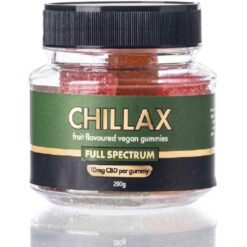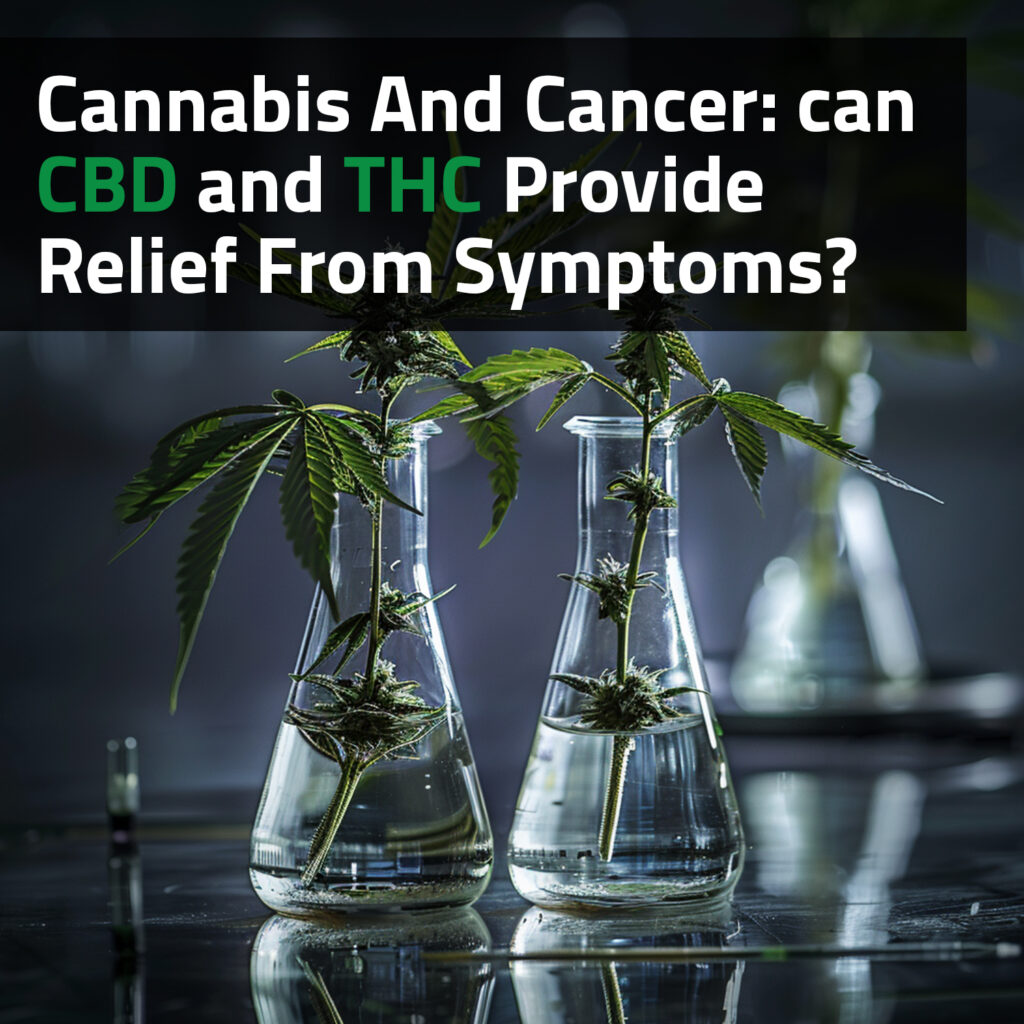Cannabis has long been a topic of interest in medical circles, particularly for its potential role in alleviating the symptoms of cancer and the side effects of its treatments. With increasing legalisation and a growing body of research, many cancer patients and their caregivers are exploring cannabis, particularly CBD (cannabidiol) and THC (tetrahydrocannabinol), as part of symptom management strategies. But what does science say, and how can these cannabinoids help? This article delves into the potential benefits of cannabis for cancer patients, examining its role in symptom relief, the differences between CBD and THC, and considerations for safe usage.
The Impact Of Cancer And Its Treatments
Cancer and its treatments, such as chemotherapy, radiation, and surgery, can cause a wide range of physical and emotional symptoms, including:
- Pain: From tumor growth to treatment side effects, pain is a common and often debilitating issue for cancer patients.
- Nausea and vomiting: Chemotherapy-induced nausea and vomiting (CINV) can significantly impact quality of life.
- Loss of appetite and weight loss: Many patients experience appetite suppression, which can lead to malnutrition and rapid weight loss.
- Sleep disturbances: Anxiety, pain, and other symptoms associated with cancer and the treatment thereof often disrupt sleep.
- Anxiety and depression: The psychological burden of cancer and its treatments can exacerbate emotional distress.
Cannabis and its unique properties may offer relief from several of these symptoms, making it a valuable tool in palliative care.
CBD And THC: How They Work To Relieve Symptoms
Cannabis contains over 100 cannabinoids, with CBD and THC being the most studied for medical use. These compounds interact with the endocannabinoid system (ECS), a network of receptors in the body that regulates processes such as pain, mood, appetite, and sleep.
- THC is the psychoactive compound in cannabis responsible for the “high.” It binds to CB1 receptors in the brain and central nervous system, offering pain relief and appetite stimulation but also causing euphoria or sedation.
- CBD is non-psychoactive and interacts indirectly with the ECS. It has anti-inflammatory, anti-anxiety, and neuroprotective properties, making it a versatile therapeutic agent.
While these cannabinoids can work independently, their effects are often enhanced when used together in what’s known as the entourage effect.
Using Cannabis For Pain Management
Chronic pain is one of the most commonly reported symptoms among cancer patients, often resistant to conventional treatments. Both THC and CBD have shown promise in alleviating pain through their interaction with ECS receptors and their ability to reduce inflammation.
- THC is ideal for managing severe, neuropathic, or treatment-resistant pain. It can also enhance the efficacy of opioids, allowing for lower doses and reducing side effects.
- CBD is effective for mild to moderate pain, particularly inflammation-related discomfort, without the psychoactive effects of THC.
Cancer patients using cannabis reported significant improvements in pain levels and overall quality of life in several studies. The combination of THC and CBD appeared to be particularly effective.
Combating Nausea And Vomiting With Cannabis
Chemotherapy-induced nausea and vomiting (CINV) can be one of the most distressing side effects of cancer treatment. While conventional antiemetics are often prescribed, they do not work for everyone. Cannabis, particularly THC, has been recognised for its antiemetic properties:
- THC-based medications, such as dronabinol and nabilone, are FDA-approved for managing CINV.
- CBD, while less studied in this area, may complement THC’s effects and reduce associated anxiety.
Patients often report that cannabis not only relieves nausea but also restores appetite, helping to counteract weight loss and malnutrition often associated with cancer treatment.
Cannabis And Restoring Appetite
Loss of appetite is a common issue for cancer patients, leading to significant weight loss and muscle wasting. THC is particularly effective in stimulating appetite, making it an important tool for maintaining nutritional health during treatment.
- THC’s interaction with CB1 receptors enhances the sensation of hunger, encouraging patients to eat even when they may not feel like it.
- CBD, while not directly appetite-stimulating, may reduce nausea and anxiety, indirectly supporting improved food intake.
Improving Sleep With Cannabis
Sleep disturbances are a widespread issue among cancer patients, often stemming from pain, anxiety, or treatment side effects. Cannabis can help regulate sleep by reducing these underlying issues.
- THC has sedative properties, helping patients fall asleep faster and stay asleep longer. However, it may suppress REM sleep, which could impact dream cycles.
- CBD has a more nuanced effect on sleep. At low doses, it can promote alertness, while higher doses may reduce anxiety and improve sleep quality.
A tailored approach, using CBD during the day and THC in the evening, may offer the best results for patients struggling with sleep.
Cannabis For Addressing Anxiety And Depression
The psychological toll of a cancer diagnosis and its treatments can lead to anxiety and depression. Both CBD and THC have potential benefits in this area:
- CBD: Known for its anxiolytic (anti-anxiety) effects, CBD can help patients manage their emotional well-being without causing intoxication.
- THC: At low doses, THC may enhance mood and promote relaxation. However, higher doses can cause paranoia or worsen anxiety, so careful dosing is essential.
Studies suggest that a balanced THC:CBD ratio, such as 1:1, can provide effective relief from anxiety while minimising the risk of side effects.
Considerations For Safe Use
While cannabis holds promise for cancer symptom management, there are important considerations to keep in mind:
- Consult with healthcare providers: Always discuss cannabis use with your oncology team to ensure it does not interact with other medications.
- Start low and go slow: Begin with a low dose and gradually adjust to find the optimal balance of symptom relief and tolerability.
- Choose the right method of consumption: Inhalation (smoking/vaping) offers rapid symptom relief but may irritate the lungs. Edibles provide longer-lasting effects but take longer to act. Tinctures and oils: Allow for precise dosing and versatile use.
- Select high-quality products: Look for lab-tested products with clear labeling to ensure safety and consistency.
The Role Of Research
While anecdotal evidence and early studies highlight the potential benefits of cannabis for cancer patients, more research is needed to fully understand its efficacy and safety. Current clinical trials are exploring the use of cannabis for pain, nausea, and other cancer-related symptoms, as well as its potential to slow tumor growth.
Cannabis, particularly its active compounds CBD and THC, offers a promising avenue for alleviating the symptoms of cancer and its treatments. From managing pain and nausea to improving appetite, sleep, and emotional well-being, cannabis can be a valuable tool in palliative care. However, it is essential to approach its use thoughtfully, under the guidance of healthcare professionals and with attention to dosing and product quality.
As research continues to advance, cannabis may become an even more integral part of cancer care, empowering patients to reclaim comfort and quality of life. Whether you are exploring cannabis for yourself or a loved one, remember that it is a journey of trial, adjustment, and collaboration – with the ultimate goal of relief and healing.
Recommended products
-
Taste of Cannabis CBD Gummies – 10mg
R150.00 -
DAVINCI IQ-C Vaporizer
R3,950.00 -
Brutal CBD – Litchi Strawberry
R195.00 – R380.00Price range: R195.00 through R380.00 -
Black Leaf – 24-Arm Tree Percolator Glass Bong
R1,650.00










